August Wilson’s The Piano Lesson is a powerful exploration of family, history, and identity, centered around a heirloom piano. This Pulitzer Prize-winning play delves into the emotional and cultural significance of the piano, which holds memories of the Charles family’s past. Set in 1930s Pittsburgh, it examines themes of legacy, tradition, and progress, making it a cornerstone of African-American literature and theater. The play’s universal appeal has led to various adaptations, including a recent Netflix film, ensuring its continued relevance and impact.
1.1 Overview of the Play
The Piano Lesson, written by August Wilson, is a poignant drama set in 1930s Pittsburgh. The story revolves around the Charles family and their ancestral piano, which holds deep historical and emotional significance. The play explores themes of family, history, and cultural identity, as the characters grapple with their past and future. Central to the plot is the conflict between siblings Boy Willie and Berniece over the fate of the piano, which serves as a symbol of their heritage. This Pulitzer Prize-winning work is part of Wilson’s The American Century Cycle, offering a powerful exploration of African-American experiences and the weight of legacy.
1.2 August Wilson and His Contribution to Theater
August Wilson was a groundbreaking playwright who profoundly shaped American theater. His works, particularly The American Century Cycle, chronicle the African-American experience across the 20th century. Wilson’s writing is celebrated for its rich dialogue, complex characters, and exploration of themes like race, identity, and social justice; He earned two Pulitzer Prizes for Drama, for Fences and The Piano Lesson, and a Tony Award for Fences. Wilson’s contributions emphasize the importance of preserving African-American history and culture, making his plays essential to understanding the nation’s collective story. His legacy endures as a vital voice in theater and beyond.
1.3 Historical Context of the Play
The Piano Lesson is set in the 1930s, a period marked by the Great Depression and ongoing racial tensions in America. The play reflects the struggles of African-Americans during this era, particularly those in the South and urban centers like Pittsburgh. Wilson draws on the legacy of slavery, as the piano symbolizes the family’s history and the brutal system that shaped their lives. The play also touches on the Great Migration, as characters navigate the complexities of preserving their heritage versus embracing new opportunities. This historical backdrop underscores themes of identity, resilience, and the enduring impact of slavery on African-American culture.
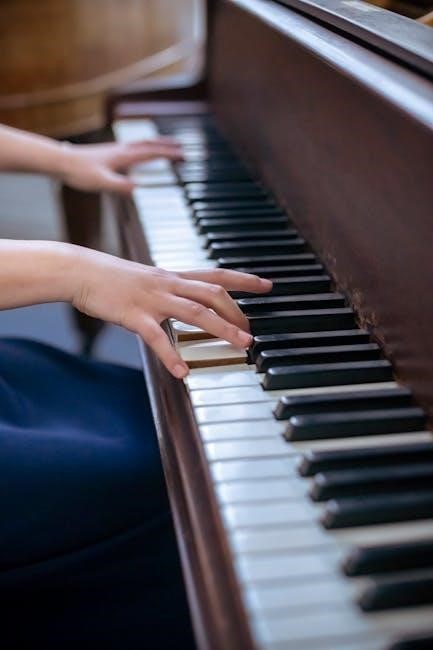
Plot Summary of “The Piano Lesson”
The play centers on a family conflict over a historic piano, exploring themes of heritage, identity, and the weight of the past.
2.1 Setting: 1930s Pittsburgh
The play is set in Pittsburgh during the 1930s, a time of economic hardship and cultural shift for African-Americans. The city’s industrial landscape and vibrant Black community provide a rich backdrop. The Charles family’s home, filled with memories and tension, serves as the primary location. Pittsburgh’s significance lies in its historical role as a destination for migrants fleeing the South, reflecting the characters’ ancestral ties and ongoing struggles. The setting underscores themes of heritage, identity, and the legacy of slavery, while also highlighting the resilience of African-American culture during this era. The time and place are integral to the play’s emotional and historical depth.
2.2 Main Characters and Their Roles
The play centers around a complex web of characters, each embodying distinct traits and motivations. Boy Willie, the protagonist, is a determined and stubborn man intent on selling the family piano to buy land. His sister, Berniece, is cautious and emotionally tied to the piano, viewing it as a cherished family heirloom. Doaker, the family’s voice of reason, narrates and provides historical context. Lymon, Boy Willie’s friend, brings optimism and naivety, while Avery, a local pastor, represents a push toward modernity and spiritual guidance. Maretha, Berniece’s daughter, symbolizes the future and the continuation of family legacy. Together, these characters drive the story’s conflict and themes.
2.3 The Conflict Over the Family Heirloom
The conflict centers on the family’s antique piano, carved with ancestral stories, sparking tension between Boy Willie and Berniece. Boy Willie sees the piano as a means to economic freedom, while Berniece views it as a sacred link to their heritage. Their disagreement reflects deeper themes of tradition vs. progress and the weight of history. Doaker and Avery offer contrasting perspectives, with Avery advocating for letting go of the past. Maretha’s presence highlights the piano’s cultural significance for future generations. The conflict escalates, revealing unresolved family wounds and the struggle to reconcile their shared history with individual aspirations, making the piano a symbol of both unity and division.
2;4 Resolution and Themes
The resolution of The Piano Lesson revolves around Berniece’s spiritual reconnection with her ancestors, which strengthens her resolve to preserve the piano. Boy Willie, unable to convince her, ultimately leaves without the piano. The play explores themes of heritage, identity, and the tension between progress and tradition. Berniece’s decision underscores the piano’s symbolic role as a keeper of family history and cultural legacy. The conflict highlights gender dynamics, with Berniece embodying the maternal role of preserving tradition, while Boy Willie represents the masculine drive for economic advancement. The play concludes with a sense of unresolved tension, emphasizing the enduring power of ancestral memory and the struggle to balance past and future.
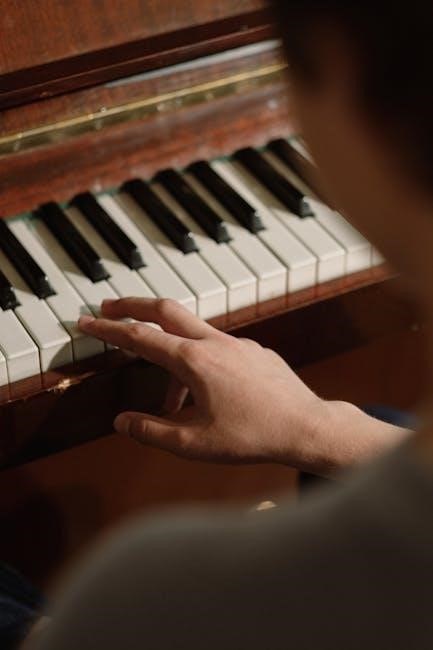
Characters in “The Piano Lesson”
The play features complex characters like Boy Willie, Berniece, Doaker, Lymon, Avery, and Maretha, each representing distinct perspectives on family, tradition, and identity.
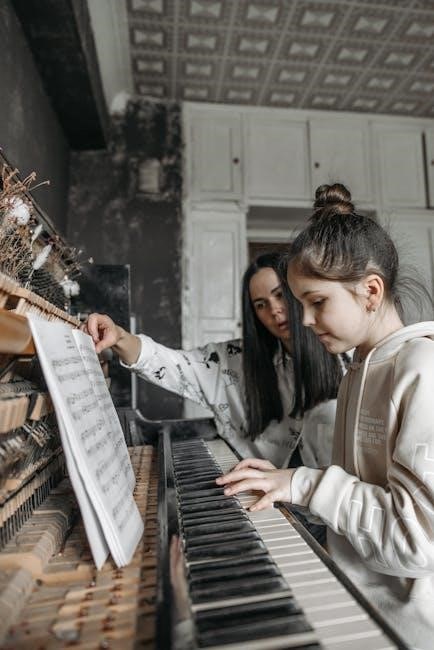
3.1 Boy Willie: The Protagonist
Boy Willie is the dynamic and determined protagonist of The Piano Lesson. He is a strong-willed and ambitious man who sees the family piano as a means to improve his life. His passion for reclaiming the piano drives the central conflict, as he believes selling it will secure his future. Boy Willie is deeply connected to his family’s history but struggles with the emotional weight of it, unlike his sister Berniece. His pragmatic approach to the piano contrasts with Berniece’s sentimental attachment, highlighting themes of tradition vs. progress. Through his character, Wilson explores the tension between honoring the past and embracing change;
3.2 Berniece: The Sister
Berniece is Boy Willie’s sister and a central figure in the play. She is emotionally tied to the family piano, seeing it as a connection to their ancestors and cultural heritage. Unlike Boy Willie, who views the piano as a means to financial gain, Berniece believes it should remain in the family to honor their history. Her deep attachment to the piano stems from the memories it holds, particularly of her parents. Berniece’s character embodies the struggle between preserving tradition and embracing change, highlighting the emotional weight of family legacy. Her resistance to selling the piano fuels the central conflict, making her a pivotal figure in the story.
3.3 Doaker: The Narrator
Doaker serves as both a character and the narrator of the play, providing context and insights into the Charles family’s history. He is the brother of Wining Boy and the uncle of Boy Willie and Berniece, often offering wisdom and a connection to the past. Doaker’s calm demeanor contrasts with the tension between his niec
3.4 Lymon: The Friend
Lymon is Boy Willie’s friend and companion, whose naivety and loyalty provide comic relief and emotional depth to the story. Unlike Boy Willie, Lymon is more reserved and often struggles with self-confidence. His friendship with Boy Willie highlights themes of camaraderie and shared experiences. Lymon’s character also serves as a contrast to the stronger personalities in the play, showcasing his simpler and more innocent perspective on life. His presence underscores the importance of relationships and trust, even amidst the conflicts surrounding the piano. Lymon’s role is pivotal in balancing the tensions and adding layers to the narrative.
3.5 Avery: The Pastor
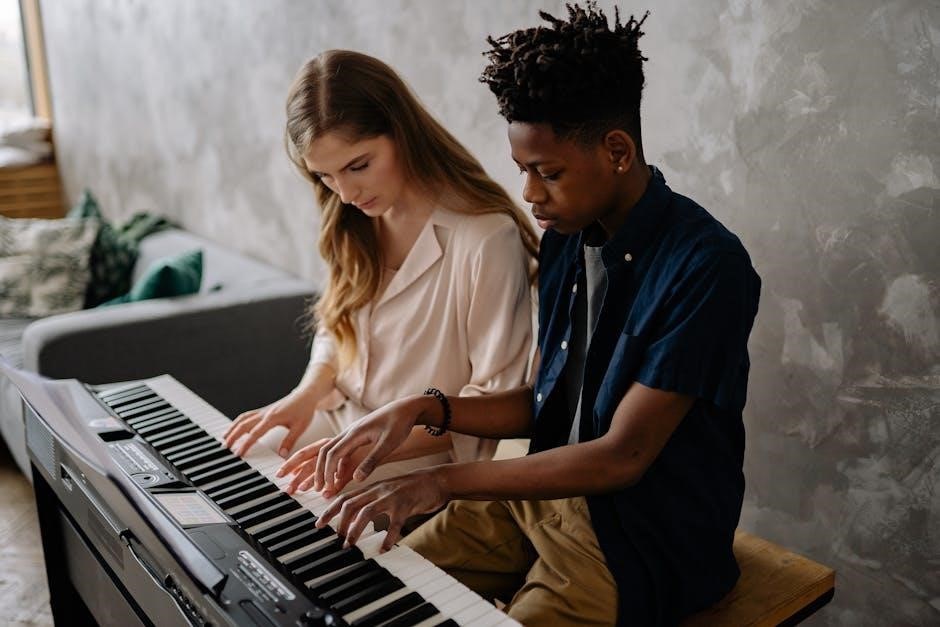
Avery is a local pastor who plays a significant role in the community and the Charles family dynamics. His character represents spirituality and moral guidance, often offering a different perspective on the conflicts surrounding the piano. Avery is also portrayed as a potential suitor for Berniece, showing his personal interest in her life. His calm demeanor contrasts with the aggressive nature of Boy Willie, creating tension in their interactions. Avery’s belief in the power of prayer and his desire to help the family reconcile their past highlights his caring and supportive nature. His presence adds depth to the story, emphasizing themes of faith and redemption.
3.6 Maretha: The Niece
Maretha is Berniece’s young daughter, representing the next generation of the Charles family. She is curious and innocent, often caught between the tensions of her family’s past and present. Maretha’s presence highlights the importance of legacy and the passing down of cultural heritage. Her interactions with the piano symbolize the potential for healing and connection to her ancestors. Despite her youth, Maretha embodies the hope for a better future, free from the burdens of history. Her character serves as a bridge between the older and younger generations, emphasizing the play’s themes of family, tradition, and the weight of inherited experiences.
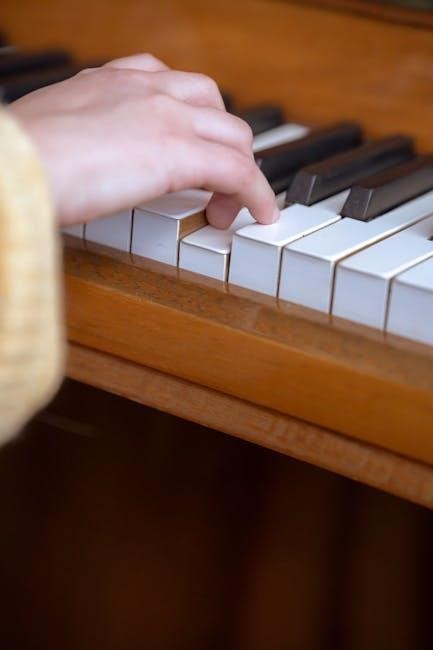
Themes and Motifs
The play explores themes of cultural heritage, family history, and the struggle between tradition and progress, using the piano as a central symbolic motif.
4.1 The Piano as a Symbol
The piano in August Wilson’s The Piano Lesson is a profound symbol of the Charles family’s history, identity, and cultural legacy. Carved with ancestral figures, it represents the family’s African heritage and the horrors of slavery. The instrument embodies the tension between preserving tradition and embracing progress, as seen in the conflict between Boy Willie and Berniece. To Boy Willie, the piano is a means to achieve financial freedom, while for Berniece, it is a sacred family heirloom. The piano’s presence evokes memories, emotions, and debates about the past, making it a central motif in the play’s exploration of identity, family, and cultural preservation.
4.2 Tradition vs. Progress
In The Piano Lesson, the conflict between tradition and progress is a central theme, symbolized by the family’s heirloom piano. Boy Willie represents progress, seeking to sell the piano to buy land and secure a better future. In contrast, Berniece embodies tradition, insisting on preserving the piano as a connection to their ancestral past. This clash reflects broader societal tensions, as African Americans navigate the weight of history while striving for economic and social advancement. The play explores the emotional and cultural costs of prioritizing progress over heritage, highlighting the importance of balancing memory with the pursuit of a brighter future.
4.3 Gender Roles and Family Dynamics
In The Piano Lesson, gender roles and family dynamics are deeply intertwined with the characters’ struggles. Berniece, as the sister, embodies traditional expectations of women, balancing motherhood and the preservation of family heritage. Her resistance to change reflects the societal limitations placed on women during the 1930s. Conversely, Boy Willie’s aggressive pursuit of progress highlights the male-dominated perspective of economic advancement. The play explores the tension between these roles, particularly through the siblings’ conflict over the piano. The dynamics also reveal generational divides, as characters like Doaker and Avery offer contrasting views on family responsibilities and cultural identity. These interactions underscore the complexities of gender and lineage in shaping individual and collective futures.
4.4 The Legacy of Slavery
The piano in The Piano Lesson serves as a haunting reminder of the family’s history under slavery. Carved with images of their enslaved ancestors, the piano symbolizes the brutal past and the struggles of their heritage. The legacy of slavery is evident in the emotional and psychological scars carried by the characters, particularly Berniece and Boy Willie, as they grapple with their identity and the weight of their ancestors’ suffering. The play highlights how slavery’s impact extends beyond physical bondage, shaping family dynamics, cultural identity, and the ongoing struggle for liberation and self-determination. This legacy underscores the tension between preserving history and forging a new future.
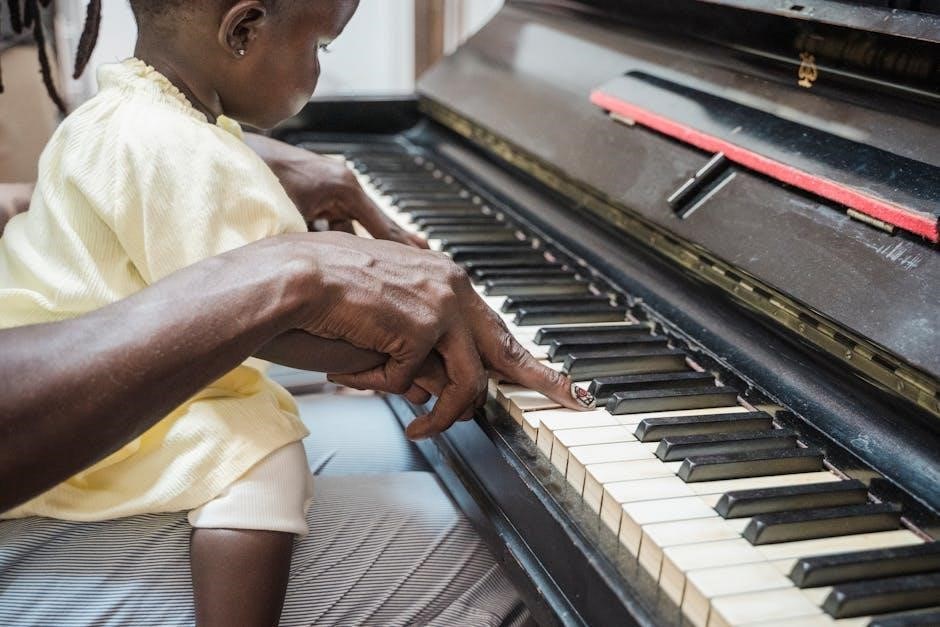
Cultural Significance
The play holds significant cultural value, showcasing African-American life, traditions, and struggles. August Wilson’s work highlights the community’s resilience and heritage, earning widespread acclaim and a Pulitzer Prize.
5.1 Representation of African-American Culture
The Piano Lesson is a powerful representation of African-American culture, exploring themes of heritage, identity, and resilience. The play delves into the struggles faced by Black families, blending historical trauma with contemporary aspirations. Through the characters’ interactions and the symbolic piano, August Wilson highlights the importance of preserving cultural traditions while navigating a changing world. The dialogue and storytelling reflect the rich oral traditions of African-American communities, offering a vivid portrayal of their experiences. By addressing themes like slavery’s legacy and racial inequality, the play provides a deeply authentic and moving exploration of Black life in America, resonating with audiences globally.
5.2 The Play’s Impact on Theater
The Piano Lesson has profoundly influenced American theater, marking a significant milestone in the portrayal of African-American experiences. As part of August Wilson’s Pittsburgh Cycle, it reshaped the narrative of Black life on stage, offering profound insights into cultural identity and historical struggles. The play’s success earned it a Pulitzer Prize, cementing its place in theatrical history. Its exploration of family, legacy, and social justice continues to inspire playwrights and audiences alike, fostering a deeper understanding of diverse voices in theater. Wilson’s work remains a cornerstone of contemporary drama, ensuring its lasting impact on the evolution of American storytelling.
5.3 Pulitzer Prize Recognition
The Piano Lesson earned the Pulitzer Prize for Drama in 1990, solidifying August Wilson’s reputation as a master playwright. This prestigious award acknowledged the play’s profound exploration of African-American heritage and its universal themes of family, history, and identity. The Pulitzer Prize not only highlighted Wilson’s unique voice but also underscored the cultural significance of his work. By receiving this honor, The Piano Lesson became a landmark in American theater, further cementing its influence on contemporary drama. The recognition also brought greater attention to Wilson’s Pittsburgh Cycle, ensuring his legacy as a pivotal figure in storytelling.
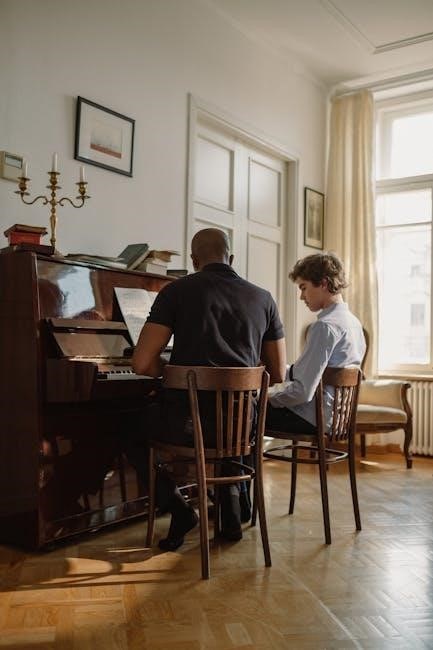
Adaptations and Performances
The Piano Lesson has been adapted into various stage productions and a Netflix film, featuring notable actors like Samuel L. Jackson and John David Washington.
6.1 Stage Productions
The stage productions of The Piano Lesson have been a cornerstone of its success, with its Broadway debut in 1990 earning widespread acclaim. Directed by Lloyd Richards, the play showcased August Wilson’s powerful storytelling and the depth of its characters. The production starred Charles Dutton as Boy Willie and Alfre Woodard as Berniece, both delivering standout performances. The play’s intimate setting and emotional intensity resonated deeply with audiences, solidifying its place in American theater history. Subsequent revivals, such as the 2012 Broadway revival, continued to highlight the play’s relevance and artistic brilliance, ensuring its legacy endures on the stage.
6.2 Netflix Film Adaptation
The Piano Lesson, directed by Kamilah Forbes, brings August Wilson’s powerful story to the screen with remarkable fidelity. Produced by Denzel Washington, the film stars Isiah Whitlock Jr. as Doaker, Danielle Brooks as Berniece, and Michael Potts as Boy Willie. The adaptation retains the play’s emotional depth and cultural richness, offering a cinematic interpretation that honors the original work. The film’s success lies in its ability to translate the intimate stage dynamics into a visual medium, making it accessible to a broader audience while preserving the essence of Wilson’s exploration of family, history, and identity. This adaptation underscores the enduring relevance of The Piano Lesson in contemporary media.
6.3 Notable Actors and Their Roles
The Piano Lesson has featured several notable actors in its adaptations, bringing depth to the characters. Samuel L. Jackson portrayed Boy Willie in the 1995 TV movie, while Charles Dutton played the role in a Broadway production. Alfre Woodard and Lynn Whitfield have both played Berniece in different adaptations, delivering powerful performances. Morgan Freeman and Isiah Whitlock Jr. have portrayed Doaker, the narrator, with Freeman’s voice adding gravitas. Courtney B. Vance and Michael Potts have played Avery, the pastor, highlighting the character’s spiritual influence. These actors have contributed to the play’s legacy, ensuring its emotional resonance reaches diverse audiences through their talent and dedication.
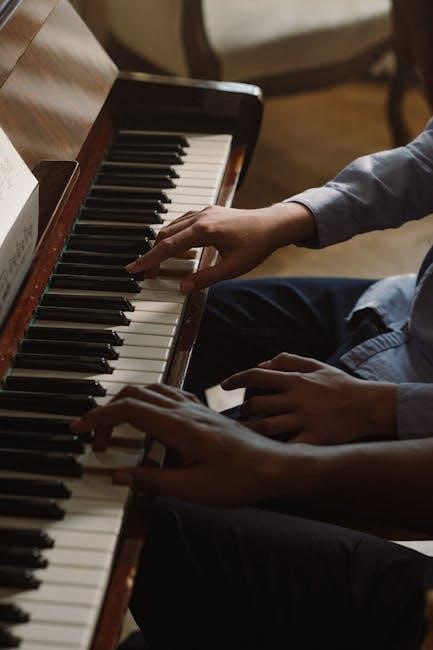
Study Guides and Educational Resources
Study guides and educational resources for The Piano Lesson provide in-depth analysis, essay topics, and teaching strategies, enhancing understanding of the play’s themes and characters.
7.1 PDF Versions for Study
PDF versions of The Piano Lesson are widely available for educational purposes, offering convenient access to the full script and supplementary materials. These digital files allow students and educators to highlight, annotate, and easily reference key scenes, dialogue, and themes. Many official publishers and online platforms provide downloadable PDFs, ensuring accessibility for in-depth study. Additionally, some versions include introductions, historical context, and analysis, enriching the learning experience. Libraries and educational websites often offer free or low-cost access to these resources, making them invaluable for classrooms and independent study. Using a PDF ensures that learners can engage deeply with August Wilson’s masterpiece.
7.2 Essay Topics and Analysis
Essay topics for The Piano Lesson often explore its rich themes, such as the piano as a symbol of heritage, tradition vs. progress, and gender roles. Students can analyze the conflict between Boy Willie and Berniece, examining their perspectives on the piano’s value. Another topic could delve into the historical context of slavery and its legacy in the characters’ lives. The role of Doaker as a narrator and his impact on the story is another fascinating area of study. Essays might also explore the play’s portrayal of family dynamics and cultural identity. Analyzing the themes of sacrifice and resilience provides deeper insight into August Wilson’s exploration of African-American experiences.
7.3 Teaching the Play in Classrooms
Teaching The Piano Lesson in classrooms involves aligning it with curriculum standards, such as exploring themes of heritage, identity, and social justice. Educators can use the play to discuss historical contexts like the Great Migration and the legacy of slavery. Discussion questions might focus on the piano as a symbol of family history and resilience. A study guide from the play’s PDF version can provide structured activities, such as character analysis or theme-based essays. Teachers can also incorporate differentiated instruction, engaging visual and auditory learners through scenes and dialogues. Connecting the play to August Wilson’s other works enhances understanding of African-American cultural narratives. Encouraging reflective discussions fosters empathy and critical thinking, making the play a powerful tool for interdisciplinary learning.
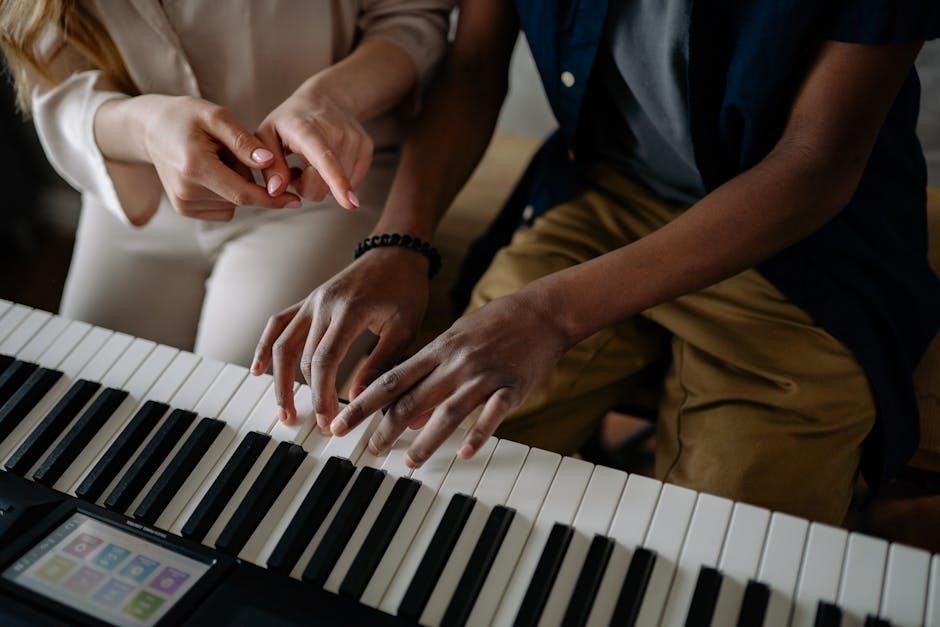
Where to Access the Play
The piano lesson play PDF can be accessed through official publishers, theatrical licensing agencies, and reputable online platforms, ensuring legal and quality access to August Wilson’s work.
8.1 Official Publishers and Estates
The piano lesson play PDF is available through official publishers and estates authorized by August Wilson’s estate. Dramatists Play Service (DPS) and Samuel French are primary sources, offering legitimate digital copies. These publishers ensure the play’s integrity and copyright adherence. Additionally, Concord Theatricals, which acquired Samuel French, distributes the play digitally. Purchasing through these channels supports the author’s legacy and provides high-quality, legally compliant materials. Fans and scholars can access the PDF directly from these websites or through theatrical licensing agencies. Always verify the publisher’s authenticity to avoid unauthorized versions and ensure the purchase supports the creator’s estate and intellectual property rights.
8.2 Theatrical Licensing Agencies
Theatrical licensing agencies play a crucial role in managing performance rights for plays like The Piano Lesson. Agencies such as Dramatists Play Service (DPS) and Concord Theatricals (formerly Samuel French) handle the licensing for August Wilson’s works. These agencies ensure that productions are authorized and that royalties are appropriately distributed. They also provide access to scripts, scores, and other materials necessary for staging the play. For those interested in producing The Piano Lesson, contacting these agencies is the first step. They offer licensing for both professional and amateur productions, making the play accessible to theaters of all sizes. Visit their websites or contact them directly to inquire about rights and availability.
8.3 Online Platforms and PDF Sources
Accessing The Piano Lesson in PDF format can be done through various online platforms. Google Search is a primary resource, but users must ensure they access legal and copyright-compliant versions. Educational platforms like Google Scholar or ResearchGate may host PDFs for academic purposes. Additionally, online marketplaces such as Amazon offer digital versions of the play. Users can also check websites like Scribd or PDFDrive, though caution is advised to avoid unauthorized copies. Libraries and universities often provide access to plays through their databases, such as ProQuest or JSTOR. Always prioritize official sources or authorized sellers to respect copyright and support the playwright’s legacy.
9.1 Final Thoughts on the Play’s Importance
The Piano Lesson is a profound exploration of heritage, identity, and resilience, offering timeless lessons. Its cultural significance and emotional depth ensure its enduring relevance in theater.
The Piano Lesson remains a vital work in American theater, offering profound insights into identity, culture, and the weight of history. Its exploration of family legacy and racial heritage resonates deeply, making it a cornerstone of African-American literary canon. Through its rich dialogue and complex characters, the play bridges generations, highlighting the struggle between preserving tradition and embracing progress. August Wilson’s masterpiece not only honors the past but also challenges audiences to reflect on their own connections to heritage. Its universal themes ensure its relevance, making it a must-read or watch for anyone interested in understanding the intersection of history, family, and culture.
9.2 Encouragement to Read or Watch
Engaging with The Piano Lesson is an enriching experience that offers deep insights into African-American history, culture, and identity. Whether you read the play or watch an adaptation, you’ll be captivated by its powerful storytelling and emotional depth. The play’s themes of family, heritage, and resilience resonate universally, making it a must-read for anyone interested in literature or theater. August Wilson’s masterful writing brings characters to life, allowing audiences to connect with their struggles and triumphs. Exploring this Pulitzer Prize-winning work is not just educational but also a meaningful way to understand the African-American experience. Don’t miss the opportunity to immerse yourself in this timeless classic.

